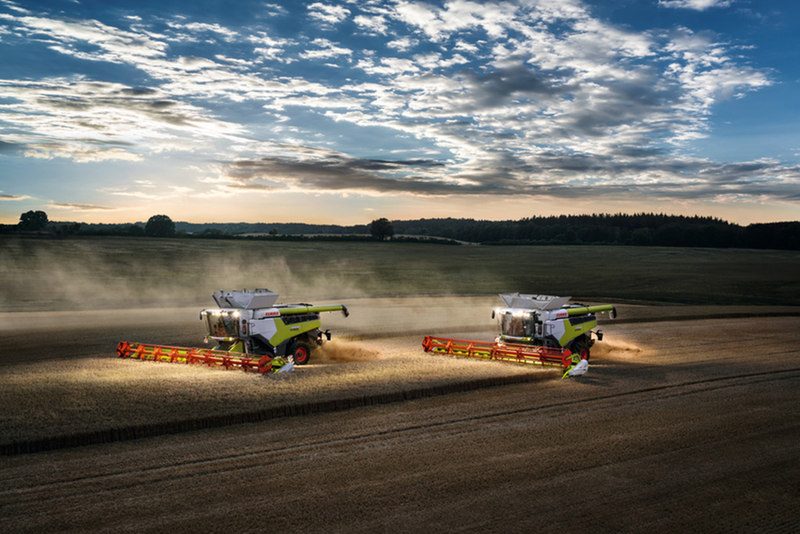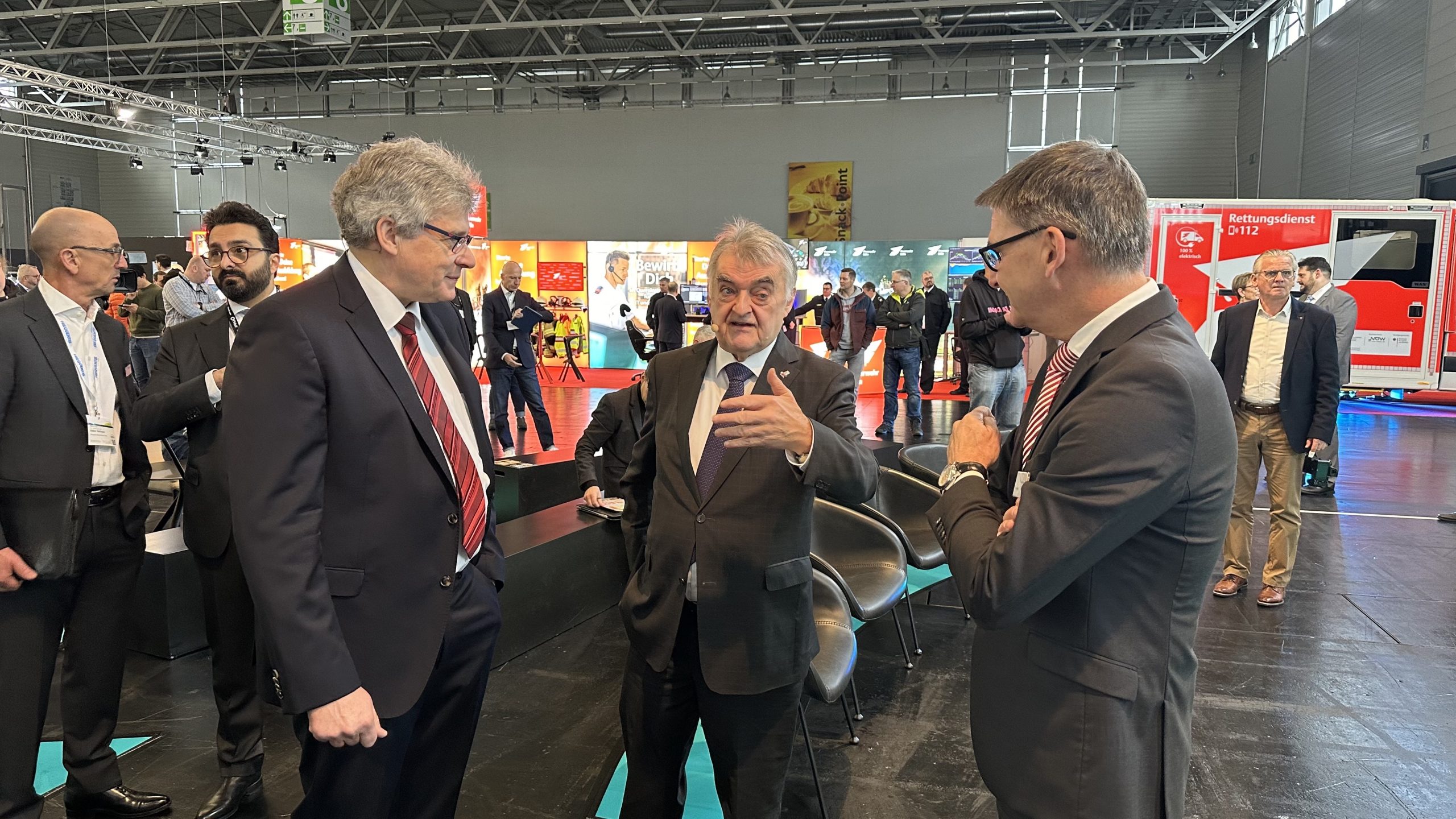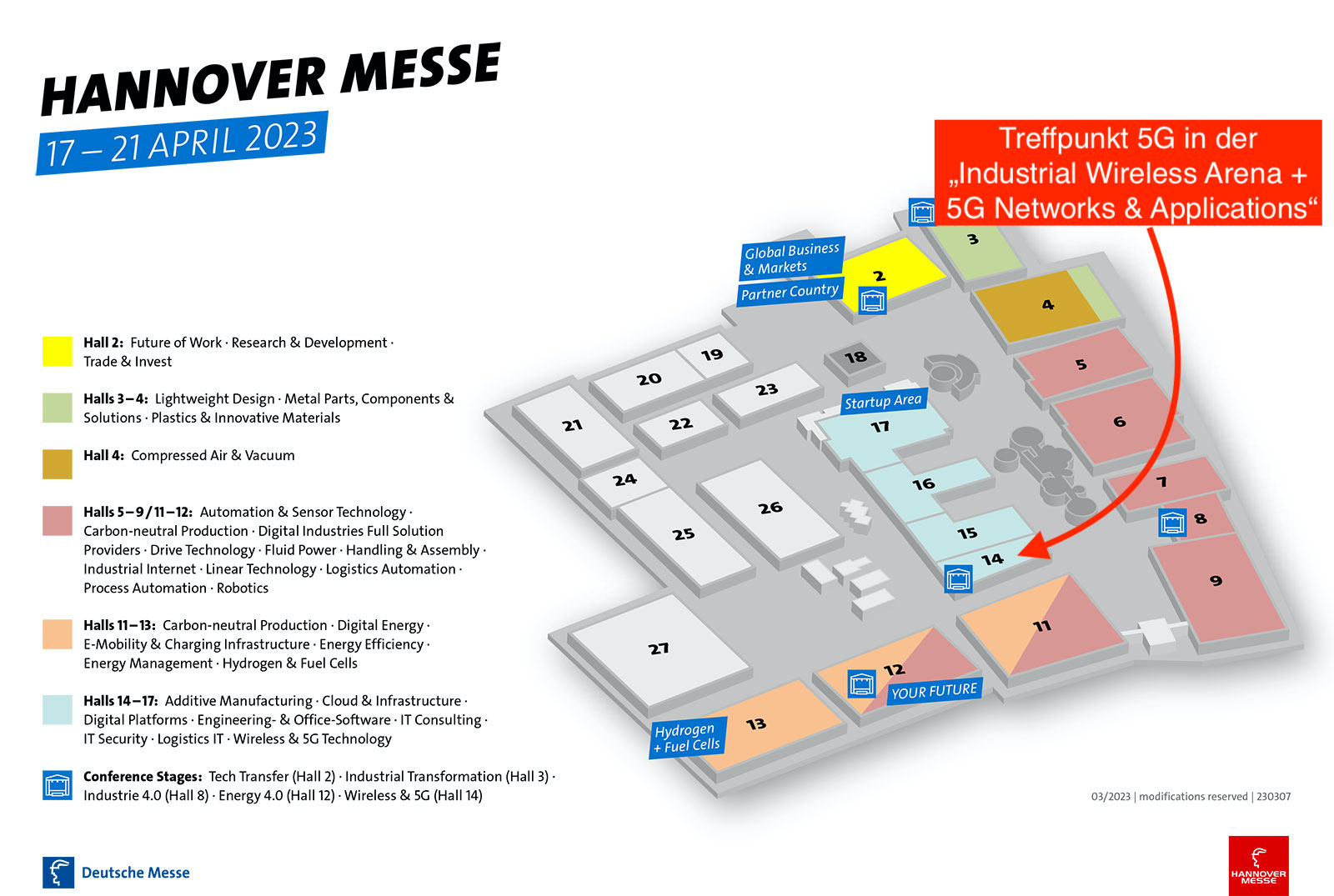Farmers have very challenging working hours, and not just during harvest time. The use of 5G can change that. Here, the use of two Claas machines at dawn. (Picture: CLAAS KGaA mbH)
Agriculture faces the challenge of meeting increasing demand for crops and livestock while balancing increased input costs and labor shortages. Faced with these unprecedented factors, young farmers and innovators are turning to future technologies to solve their problems.
Author: Guido Voigt
Working in agriculture has never been a walk in the park. While the challenges change over the years, overall there is a lot of pressure on farmers to act. To alleviate this pressure, the industry is looking to new technologies: Advances are expected to come primarily from automation and robotics, livestock technology, precision agriculture and artificial intelligence.
The challenge of today’s farmers
Agriculture is an industry that has remained relatively unchanged for millennia. However, as the world’s population grows and operating costs rise, the industry is at a turning point. Farmers are being asked to produce more than ever before, while at the same time carrying the burden of doing so in a sustainable manner while ensuring worker safety and customer satisfaction.Many equipment manufacturers are reinventing the way farm equipment works by looking at remote and track-mounted machines. With the additional drastic decrease in the number of workers, one of the first innovations needed was remote-controlled agricultural machinery.
Telematics offers support
Technology companies like Lantronix have turned to the IoT to develop new solutions for agriculture based on connectivity. One of these solutions is the FOX3 series of telematics gateways.
These gateways are installed on agricultural equipment such as tractors, vehicles and other large-scale equipment, while Bluetooth LE tags are attached to implements such as plows, spreaders, harvesting and chopping tools. Using gateways and Bluetooth LE tags on the equipment, the farmer can track the movement and location of the vehicle, as well as check the driver and fuel consumption. All this data is collected remotely and shared securely.
Equipment management and tracking
By using Lantronix FOX3 Series telematics gateways, farmers can find cost-effective solutions to their challenges by developing an online system to manage and track their equipment. They are also able to get their goods to market faster and more efficiently. This technology has also improved farm equipment manufacturing by sending data to manufacturers looking for ways to improve operational efficiency.
Other benefits to farmers and equipment manufacturers through the use of this technology:
- Faster decision making due to the increased intelligence of the data that both machine manufacturers and farmers can collect.
- Cost reduction thanks to the possibility of documenting the performances of the main machine and the agricultural equipment by installing telemetry units only on the main machine instead of on individual parts.
- Generating data on equipment usage, such as location and time frame. This leads to the development of new applications and better management of rental equipment and inventory.
- Manage and share data through the customer’s preferred web portal.
- More precise management and increased field management by simplifying logistics, tracking and data collection while eliminating paper logbooks.
Alternative applications in agriculture
Farm automation or “smart farming” will become more prevalent in the long run and will be further accelerated by the use of 5G networks. The use of IoT technology in this industry will therefore continue to evolve and expand. The impact of this focus on new technologies in agriculture goes beyond a single product or function.
Farmers are already using technologies such as robots and drones to facilitate tasks that workers consider mundane. Automation in agriculture is also helping to solve important problems such as labor shortages by eliminating the need for human contact in some tasks.
Automating harvesting has proven difficult in the past because of the need to handle crops gently. However, new robots have proven successful in this task and are now being used to harvest strawberries and apples without damaging the fruit.
Drones are used both to monitor the condition of crops and to apply fertilizers and pesticides. Thanks to the infrared images provided by drones, growers can address problems early and avoid potentially costly problems that could damage the entire crop.
For livestock producers, increasing data collection makes it easier than ever to track and manage livestock. They can also properly care for and feed their animals thanks to improved nutritional technologies and genetics. Some livestock producers are even equipping their animals with individual, wearable sensors to monitor their daily activity and keep an eye on any health issues.
Modern greenhouses are another area where technology has advanced with the use of LED lights and automated systems. These new components allow for the creation of an ideal environment for growing plants regardless of the season and are another example of how future technologies are changing the agricultural industry.
The Modern-Day Farmer
Although these technologies are still fairly new, more and more farmers are adopting them as they confront the changing climate in their industry. Modern agriculture may not look like the farms of our grandparents, but it delivers the same result the world desperately needs: high-yielding crops and healthy livestock.
By exploring how technology can improve agriculture, we can find a path to more sustainable and efficient farming. As these technologies and solutions become more sophisticated, we can meet tomorrow’s challenges while producing a harvest that yesterday’s farmers would be proud of.
Guido Voigt is Director of Engineering at Lantronix, a global provider of turnkey solutions and technical services for the Internet of Things (IoT). Her goal is to enable her customers to deliver smart, reliable and secure IoT and OOBM solutions while accelerating time to market.
Learn more about Guido Voigt here.









Leave A Comment